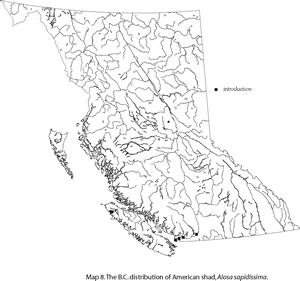Dorsal spines (total): 0; Dorsal soft rays (total): 15 - 19; Anal spines: 0; Anal soft rays: 18 - 24; Vertebrae: 51 - 60. Moderately compressed, belly with a distinct keel. Lower jaw not rising steeply within mouth. Gill rakers long and slender (fewer in young). Silvery in color with blue or blue-green metallic luster on back (Ref. 1998). A dark spot on shoulder, sometimes followed by several more, or even a second row. Resembles A. pseudoharengus with lower jaw rising steeply within mouth, eyes larger, and fewer lower gill rakers, as also A. aestivalis and A. mediocris (Ref. 188). Silvery, with a green or bluish back (Ref. 7251). Branchiostegal rays 7 (Ref. 4639).
Source: FishBase. Whitehead, P.J.P. 1985 FAO species catalogue. Vol. 7. Clupeoid fishes of the world (suborder Clupeioidei). An annotated and illustrated catalogue of the herrings, sardines, pilchards, sprats, shads, anchovies and wolf-herrings. Part 1 - Chirocentridae, Clupeidae and Pristigasteridae. FAO Fish. Synop. 125(7/1):1-303.

